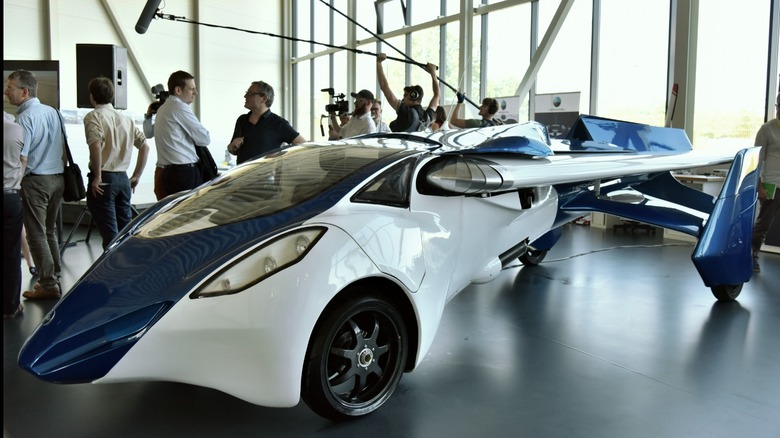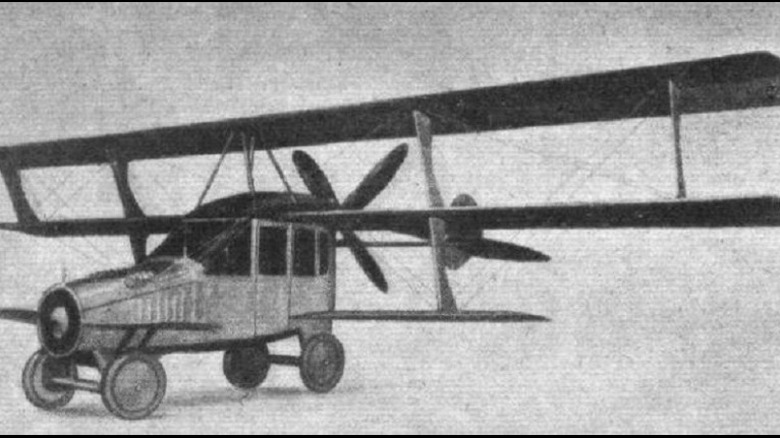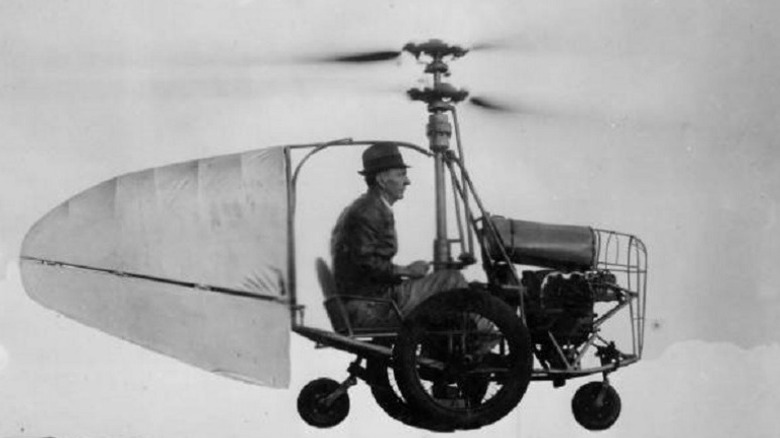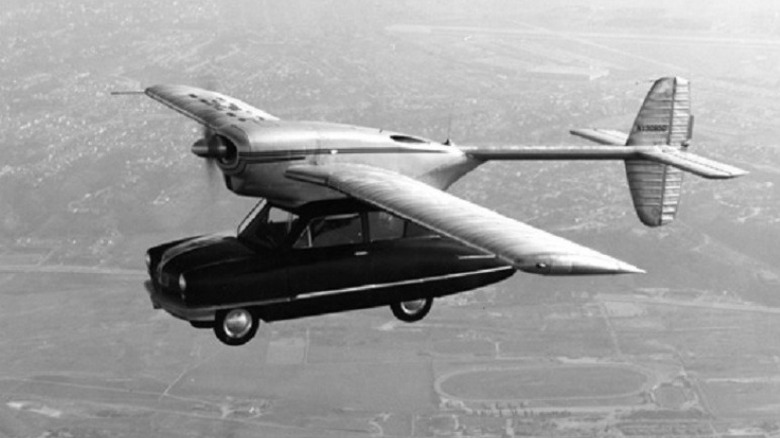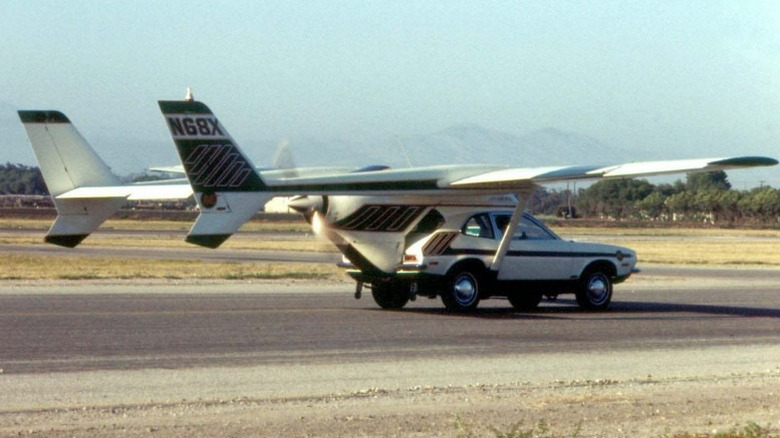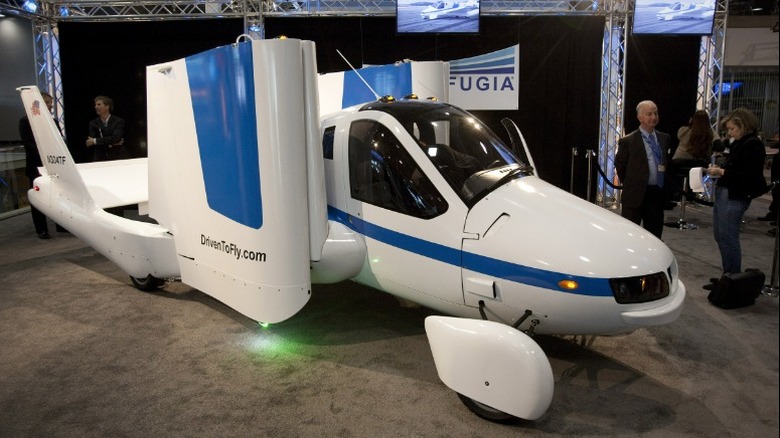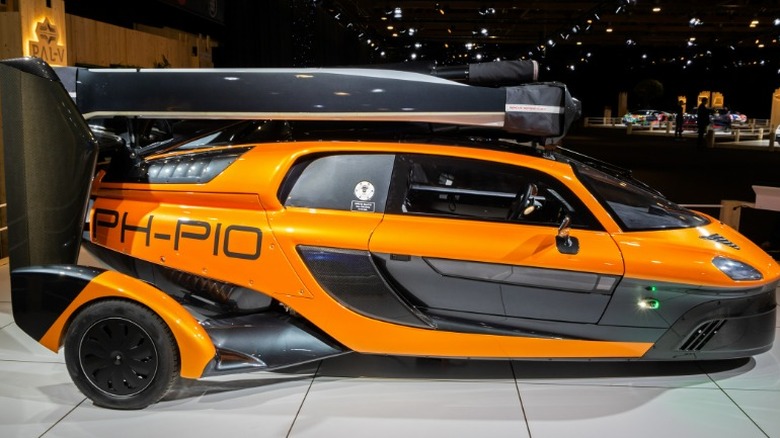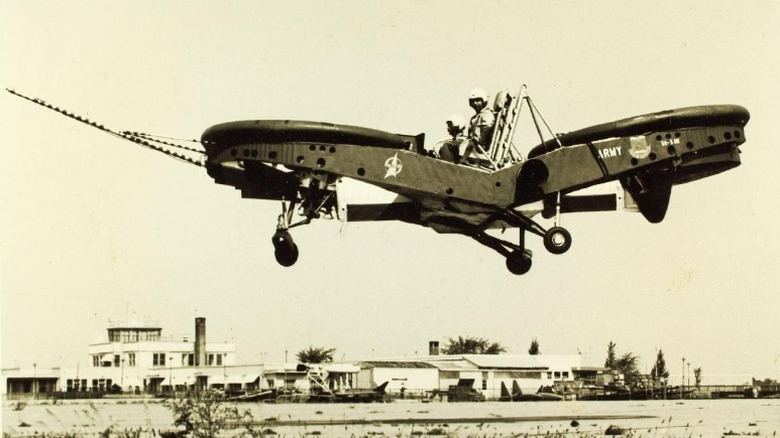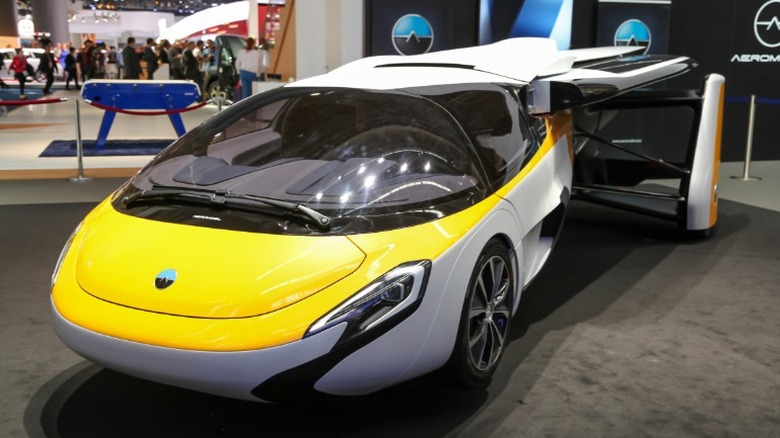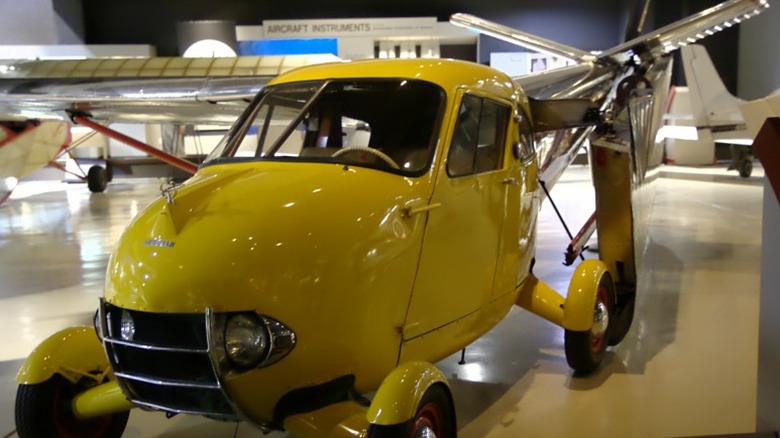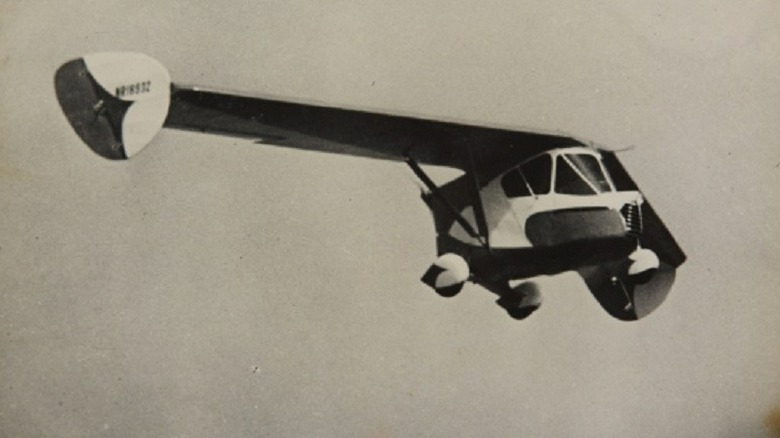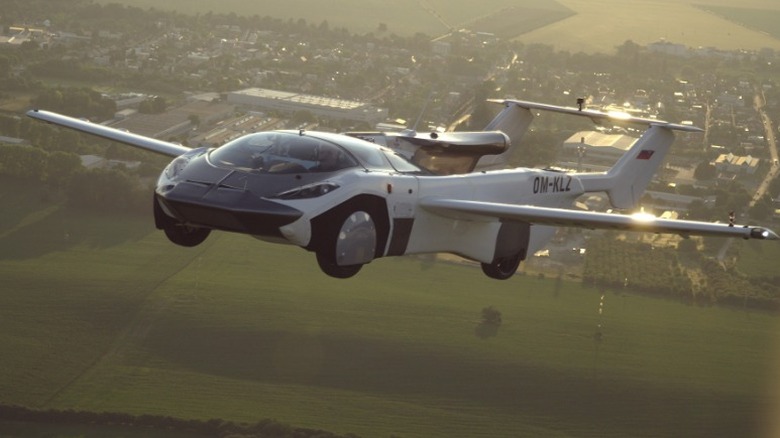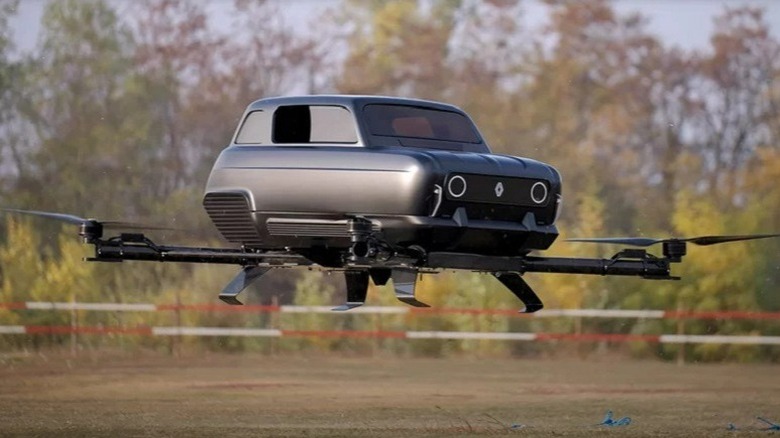12 Epic Flying Cars That Are Unlike Any We've Ever Seen
Flying cars have been the fantasy of dreamers for as long as the automobile has been in production. As far back as 1917, inventors have attempted to create a combination vehicle that would provide ground transportation but can also soar above the traffic. Producing a successful flying car presents a significant challenge to potential manufacturers. Safety is of utmost importance and factors such as a short take-off and landing distance play an important role.
Technology advances have made the flying car a feasible design. Improvements to battery energy density, advances in the use of lightweight materials, computer simulation, and navigation systems have prompted the development of a variety of personal flying vehicles in the form of fixed-wing craft to quadcopter drones. Today, flying cars are a reality, the Aeromobile 3, Terrafugia Transition, and PAL-V are some examples. They promise to influence how people commute, work, and live in the near future. Over the past 100-plus years, the industry has seen numerous innovative flying car designs. Some were outright failures, some marginally successful, while others displayed engineering genius. However, all of them contributed to the development of modern-day flying cars.
Here are 12 epic flying cars that are unlike any we've ever seen.
Curtiss Autoplane
In 1917, an aviation engineer, Glen Curtis disassembled one of his airplane designs and attached some of the components to an aluminum Ford Model T, creating the first flying car. Although the Autoplane never really flew, the design set the tone for more successful attempts to follow.
The flying car was often referred to as the "aerial limousine" featuring an enclosed cabin with three seats hosting the pilot up front and the two passengers seated side-by-side in the rear. Curtis fitted the triplane with wings from the Curtiss Model L trainer and a 100-horsepower Curtiss OXX engine that powered the rear-mounted propeller via shaft and belts. The single-engine propelled the vehicle both on the ground and in the air. Four wheels supported the vehicle, the two in the front could be turned for steering on the ground like a car, and both the wings and tail were detachable when not needed for ground transportation.
Although the Curtiss Autoplane seemed like a feasible design in 1917, the vehicle most likely failed several criteria required for flight. To fly, airplanes must be built with exceptionally lightweight materials, while cars are most often built with stronger and heavier materials to protect passengers in case of an accident on the road. An airplane drivetrain to power a propeller does not convert easily to a ground vehicle system with heavy gears needed to accelerate a car on the road. Also, the aerodynamics of an airplane differ greatly from those of an automobile.
Featured image by Flight Magazine 1917 via Wikimedia Commons | Cropped and scaled | Public Domain
Jess Dixon's Flying Auto
Jess Dixon (1886-1963) of Andalucia, Alabama, designed a flying machine composed of an automobile, helicopter, and motorcycle. Dubbed the "Flying Ginny," the device is controversial because only one photo of the machine is known to exist, and no test-flight records survived.
Although aviation historians classified Jess Dixon's vehicle as a flying car (it even required automobile license plates). The two overhead blades made it seem more like a helicopter or perhaps a rolling gyrocopter with road-driving capabilities. Dixon himself even called it a helicopter, and on occasion, he would tie the machine to the ground with ropes to determine if the overhead blades had sufficient capacity to lift the machine into the air.
According to Modern Mechanix magazine (via AutoJosh), an air-cooled 40 horsepower engine powered the Flying Ginny making it capable of speeds up to 100 miles an hour. Dixon designed the vehicle to provide a transfer of engine power from the rotor blades to the wheels, making it road worthy. The two large lifting rotors revolved in opposite directions with cyclic and collective pitch control. Foot pedals controlled the rear tail vane, allowing the driver (pilot) to turn while in the air and aid in forward, backward, and sideways flight as well as hover in the air. According to Secret Projects, Dixon's flying auto was initially equipped with a big tail to handle the torque, however, it proved insufficient, and a tail fin motor was installed to compensate.
Featured image by Kobel Feature Photos (Frankfort, Indiana) via Wikimedia Commons | Cropped and scaled | Public Domain
Convair Model 116
Designer Ted Hall built his Convair Model 116 flying car prototype by attaching a small airplane including wings, tail, and propeller to a car. The airplane components could be removed, leaving a vehicle that functioned like a normal car. The Model 116 made its maiden flight in 1946 and the flying car completed 66 flights during its testing phase.
The following year, Convair created an upgraded version of the flying car (two prototypes), the Model 118 ConvAirCar. The company enhanced the engine from the 130-horsepower mill used in the Model 116 to a 190-horsepower engine giving it a significant boost in power for flight. The car was built with a fiberglass body to keep the vehicle light for maximum airborne transport and improve fuel efficiency on the road. The wings, engine, and propeller affixed to the top of the car were removed when not in use and towed behind the car. The Model 118 offered one hour of flight and a ground mileage of 45 miles per gallon while seating one pilot and three passengers (via Vintage News Daily).
Convair scheduled 160,000 Model 118 units for its first production run with a projected $1,500 price tag (via Vintage News). However, the crash of one prototype in California changed the company's plans. The tragedy occurred when the pilot took off assuming a single fuel tank (that was full) fed both the plane engine and the car engine. However, the fuel tank for the plane engine ran dry in mid-flight while the car fuel tank still read full. After the accident, the second prototype was rebuilt with components from the first aircraft and flown, but a loss of enthusiasm ended the program shortly thereafter.
Featured image by unknown author via Wikimedia Commons | Cropped and scaled | no known copyright restrictions
AVE Mizar
Years after the Convair Model 118 flying car was built by combining an airplane with a car, two aeronautical engineers, Henry Smolinski and Hal Blake, formed the Advanced Vehicle Engineers company to tackle the same feat. Their goal was to build a vehicle that could be driven to the airport on regular roads, and once there, converted into an airplane by attaching wings, a tailfin, and an engine with flight controls already inside the car.
The two engineers chose the subcompact Ford Pinto hatchback for the automobile portion of the flying car, a Cessna Skymaster to give it flying capabilities, and named it the Ave Mizar. On the runway, the Pinto's engine powered the car's rear wheels bringing the vehicle up to speed for takeoff, after which the Cessna Skymaster propeller took over providing lift. The Pinto's brakes provided braking power upon landing.
At the time, the engineers were unaware of the Pinto's rear fuel tank design flaw that would cause several deadly accidents. However, it wasn't Pinto's explosive rear fuel tank that ended the AVE Mizar's future as a flying car. In 1973, shortly after production was scheduled to begin, the right wing of one prototype collapsed in mid-air, and the flying car tumbled to the ground, ending the innovative flying car's future (via Hot Cars).
Featured image by Doug Duncan via Wikimedia Commons | Cropped and scaled | CC BY-SA 3.0
Terrafugia Transition
The Terrafugia Transition has airplane aerodynamics with wings that fold in and then swivel into a vertical position while the vehicle is on the ground. The flying car is equipped with a Rotax 912iS 4-cylinder fuel-injected engine producing 100 hp and rated at 2,000 hours of Time Between Overhauls (TBO). It's a two-seater (Pilot and one passenger). Hybrid-electric motors power the vehicle while on the road. In automobile configuration, it can reach speeds of 70 mph and in the air, the top velocity is 115 mph (via Terrafugia).
Safety features include a structurally rigid cabin designed to meet auto safety standards, seatbelts, airbags, and an airframe parachute. The extra auto parts required to meet road safety standards on the early model made it too heavy to conform with FAA regulations. However, in 2010, the FAA eased its regulations and changed the flying car's classification making it easier to get an appropriate pilot's license. And, in February 2021 the FAA granted Terrafugia a Special Light-Sport Aircraft (LSA) airworthiness certificate (via Slashgear). The vehicle still needed to meet NHTSA's safety standards for driving on the road.
The company initially decided to build a "flight-only" model of the Transition but with a commitment to continue developing the driving portion of the aircraft design for legal in the sky and on the road. However, shortly thereafter, Terrafugia laid off 80 to 100 employees at the company's headquarters in Woburn, Massachusetts (via AOPA) and any hopes of further development remain with the current owner, Zhejiang Geely Holding Group in China.
PAL-V
The PAL-V is a stowable two-passenger, three-wheeled, flying car with top-mounted manual-folding rotors and a rear auto-folding propeller. The lightweight vehicle with a leaning suspension system like the system on the Carver One, an electric vehicle with properties of a car and motorcycle, gives it excellent handling.
The PAL-V offers unparalleled safety with its gyro rotor flight. The design is best described by Popular Mechanics. "In this style of aircraft, an unpowered rotary wing rides above the fuselage at a controlled angle while a pushing propeller drives the vehicle forward. As it accelerates, the rotary wing picks up angular velocity and eventually develops lift the same way a helicopter does. Because this wing is unpowered and dependent only upon forward motion for rotation and lift, loss of power isn't as dangerous." The flying car requires only 540 feet of runway for takeoff and 100 feet for landing.
Operating with a single engine, the power is automatically switched between the propeller and the tires depending on the requirement for airborne power or contact with the ground. A single-engine simplifies operation and keeps the weight and cost to a minimum. The PAL-V is capable of top speeds of 112 mph in the air or on land. The flying car was the first to get road permission for Europe and the first to complete the full certification process with the European Union Aviation Safety Agency (EASA). PAL-V is currently taking orders for its limited production (90 units) Liberty and Liberty Sports models are offered at $599,000 and $399,000 respectively.
Piasecki AirGeep
In 1957 the U.S. Army Transportation Research Command issued a contract for a flying jeep. The military wanted a vertical takeoff and landing (VTOL) aircraft that was smaller than a traditional helicopter (via Aviastar). The AirGeep was one of three winners along with the Chrysler VZ-6 and the Curtiss-Wright VZ-7 and the only vehicle to be tested in the field.
Piasecki's design, the model 59K Skycar (later renamed AirGeep) included two tandem, three-blade ducted rotors initially powered by 425 hp Lycoming O-360-A2A piston engines producing 425 hp and driving the rotors via a central gearbox (via Piasecki). The pilot sat between the rotors and the vehicle was supported on the ground by three or four wheels. The company replaced the two engines in the second prototype with a single Turboméca Artouste IIB turboshaft generating 425 hp, and later with the lighter and more powerful Garrett AiResearch TPE331-6 engine developing 550 hp.
The first models featured a flat design while later versions curved upwards at the front and back forming a flattened V-shape. When the craft was loaned to the Navy for evaluation for use at sea (the Model 59N), it was fitted with floats. However, the idea was eventually abandoned (via List Verse). Piasecki powered later AirGeeps with two Artouste engines and installed ejection seats for the pilot and a co-pilot and three additional seats for passengers on some models. A powered tricycle undercarriage improved mobility on land. None of the models met expectations, the program was discontinued, and the military focus returned to conventional helicopters.
Featured image by SDASM via Wikimedia Commons | Cropped and scaled | no known restrictions
AeroMobil 3.0
Built in Slovakia, the AeroMobil 3.0 flying car prototype can reach 100 mph on the ground and 124 mph in the air. The vehicle needs only 820 feet of runway, road, or grassy field to take off and 164 feet to land. Co-designed by Klein and Juraj Vaculik, the flying car seats two and features collapsible wings with a variable angle of attack to reduce the take-off requirements and enhance performance (via Aerospace Technology).
AeroMobil builds the body shell, wings, and wheels of the flying car with a steel framework and lightweight carbon coating. At six meters in length, the AeroMobil 3.0 is slightly longer than a Cadillac Escalade (5.4 meters) making it easy to park in a standard parking space. The sturdy suspension enables take-off and landing on rough terrains, and the vehicle can be refueled at any gas station with regular gas. The flying car holds two passengers and boasts a wingspan of 8.32 meters with the wings deployed.
AeroMobil equipped the flying car with a liquid and air-cooled four-cylinder Rotax 912 engine that produces 100hp in both flying and road mode. The vehicle consumes 15 liters of fuel per hour in the air and 8 liters per 100 km on the road (via Aircraft Concept). The AeroMobil 3.0 takes off at a speed of 81mph and flies to a maximum range of 435 miles in the air and 545 miles on the road.
Featured image by Alexander Migl via Wikimedia Commons | Cropped and scaled | CC BY-SA 4.0
Taylor Aerocar
Aerocar International's first flying car, known as Aerocar I or Taylor Aerocar was built in 1949, with inspiration from Robert Fulton Jr's Airphibian (the first roadable plane to be certificated by the Civil Aeronautics Administration). Unlike other flying cars that transport their aircraft components with them including the wings, while operating in car mode, the two-passenger Taylor Aerocar offers the option of towing its wings and tail like a trailer or simply leaving them at the airport.
Once at the airport, the pilot (driver) flips up the rear license plate to connect the drive shaft to the tail. The wings are swung around and fastened in place while the flight controls, including the movable steering wheel and rudder pedals, slide into position automatically. The process of transforming the Aerocar from auto-configuration to an aircraft can be done in less than 15 minutes. For safety reasons, the engine will not start unless all the connections are properly made. (via Museum of Flight).
Aerocar fitted its first flying car model with a Lycoming O-320 four-cylinder horizontally-opposed aircraft engine, mounted in the rear of the cabin. The engine provided power for both flight and operation on the ground as a car. It generated 143 hp sent through a three-speed manual transmission to the front wheels. On the road, the Aerocar had a top speed of 67 mph and in the air, a top speed of 110 mph with a service ceiling of 12,000 feet and a range of 300 miles. (via Motor Trend).
Featured image by Aerocar via Wikimedia Commons | Cropped and scaled | CC BY-SA 2.0
Waterman Aerobile
In 1934, Waldo Waterman became the first American to make a car that flew successfully (the Curtiss Autoplane in 1917 never actually flew). The roadable aircraft was a tailless high-wing monoplane with two seats and tricycle wheels. The single-engine roadable aircraft in a pusher configuration was one of the first of its kind. The Aerobile was based on a prototype, built in 1932, and named "Whatsit" for its unconventional style. The Aerobile design followed, built specifically for a U.S. department of commerce contest (via Air and Space).
The improved version was a low-swept-wing monoplane with fins mounted near its wing tips and powered by a Kinner K-5 5-cylinder radial pusher engine producing 100 hp (via The Vintage News). To operate in car mode, the propeller and wings could be easily detached. However, as an alternative to removal, the propeller could be de-clutched to avoid windmilling the engine at speed. The engine sent power to the main wheels via a differential gear, and the steering was attached to its nosewheel.
On the ground, the engine drove the main wheels through a differential gear, as normal, and the car was steered by its nosewheel. The wheels were enclosed in fairings to reduce drag while in the air and as a safety measure on the road. Waterman built only five Aerobile models, three of which made international news when they flew from the factory at Santa Monica to the National Air Races venue in Cleveland, Ohio (via Vintage News).
Featured image by Waterman via Wikimedia Commons | Cropped and scaled | no known restrictions
Klein Vision aircar
The Klein Vision AirCar is a two-seater flying car that can transform from a sports car into an aircraft in under three minutes. In June 2021, the vehicle flew between Slovakia's Nitra and Bratislava airports in 35 minutes, landed safely, retracted the wings, and drove like a car to the city center (via Man of Many). Powered by a 160-horsepower BMW engine, the AirCar had completed more than 40 hours of test flights by June 2021 and reached 8,200 feet while achieving a maximum cruising speed of 118 miles per hour (190 kilometers per hour).
The sports coupe body of the AirCar, supported by four road wheels, acts as the aircraft fuselage when airborne and contributes 30-40 percent of the total lift. The wings fold out and a high tail is carried by tail booms. Semi-monocoque of carbon fiber composite over a steel subframe makes up most of the construction, and multiple programmable servo motors perform the transition between road and air configurations. In road mode, the retracted tail surface acts like a conventional rear airfoil creating a downforce to improve performance. Klein Vision is planning to develop twin-engine and amphibious versions as well as add three- and four-seater models of the AirCar.
The successor AirCar, Prototype 2 (via Klein Vision), boasts a 300-horsepower engine, and Klein Vision expects it to cruise at 186 miles per hour (300 kilometers per hour) and have a range of 621 miles (1,000 kilometers).
Renault Air4
While several automakers and tuners have converted some classic cars to EV power, few have turned one into a flying car. For the 60th anniversary of the original Renault 4, the company collaborated with a design hub, The Arsenale, to build a flying version of the vintage four-door hatchback.
While the shell of the AIR4 closely resembles the Renault 4, few features function in the same manner. The body is built with carbon fiber to maintain rigidity and hosts no doors (via Auto Week). To enter, the pilot must lift the entire body shell, hinged at the front, and take a seat. The AIR4 uses 22,000-mAh lithium-polymer batteries with a total capacity of 90,000 mAh to power the two-bladed propellers and produce lift.
What makes the Air4 unique is the lack of wheels, meaning the vehicle cannot drive on the ground in a car configuration like most other flying cars. Like many drones, it employs four two-blade propellers at each corner of the vehicle. The all-carbon-fiber Renault4 body shell sits in the center of a rota frame. The Air4 is essentially a quadcopter modeled after a classic Renault car.
Renault claims the battery-powered AIR4 can fly horizontally at a top speed of 58 mph with a 45-degree inclination and can climb at a rate of 31 mph and can reach an altitude of 2300 feet. The most essential metric of the AIR4 is the maximum length of flight time on a full battery charge in the most efficient power usage mode. Most likely it will not exceed 30 minutes.
